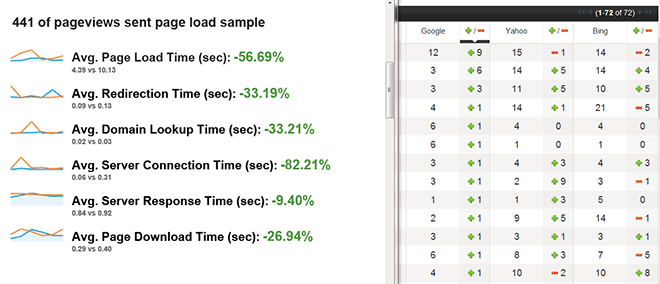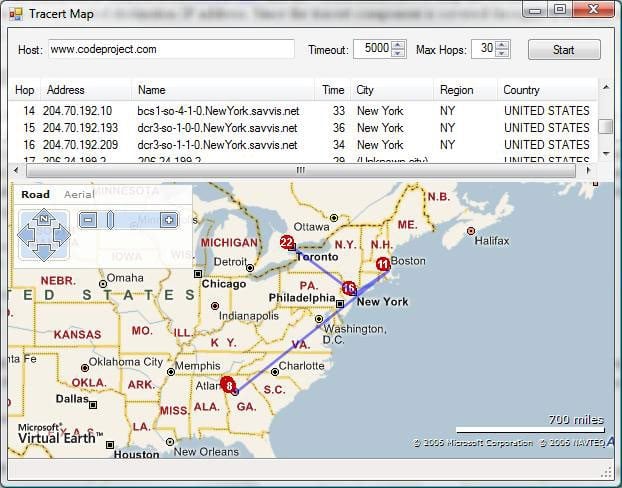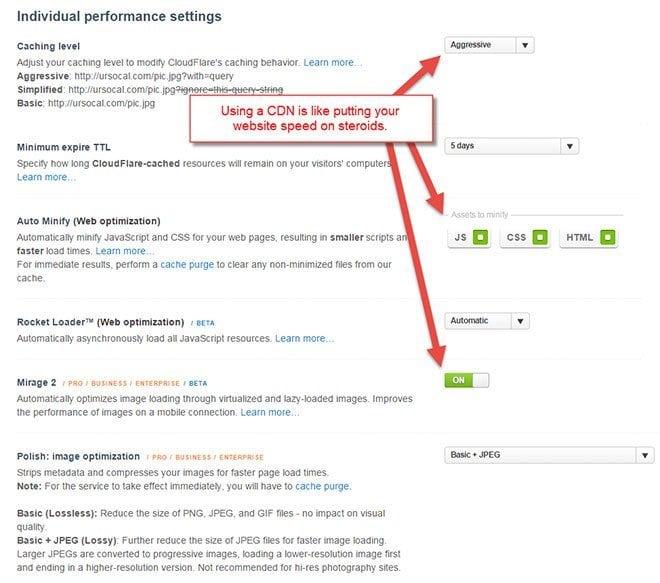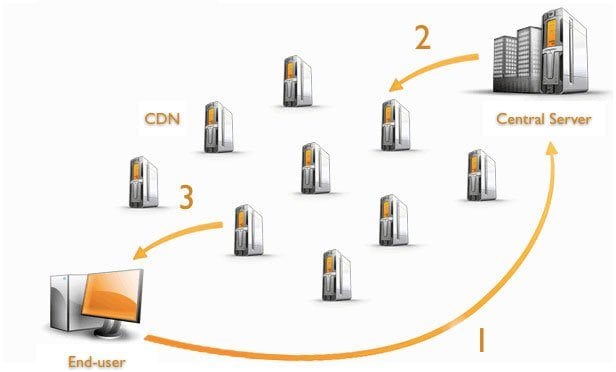Content Delivery Network (CDN)

Before you hit the panic button, relax, content delivery network just sounds complicated, but it’s a simple enough SEO task that your grandmother could set it up with her hands behind her back.
All that’s involved is a service provider such as MaxCDN or Cloudflare, or for larger organizations, Akamai or Cloudfront and a few bucks per month for them to host a cache of your website files.
However, it’s what they do with your files that makes CDN’s sexy to search engines.
At the moment, your files are hosted on a web server likely on the other side of the country (or globe). When a user accesses the files, the packets of your website’s information have to “hop” across multiple access points before they get to your visitor’s computer. You can use your computer’s command prompt to run a traceroute to see just how many stops your web files make before hitting your desktop. Below is an example of what you might see:

Enter Your Content Delivery Network
All over the country secure cloud servers owned and leased by the service providers listed above. In fact, there’s probably a cloud server just minutes from where you’re sitting. You can see where we’re going with this right?
Depending on the provider, a copy is made of your files every few seconds, and then optimized, minified, polished, and put on virtual steroids behind an ironclad security wall resistant to DOS attacks and other issues your current web server is vulnerable to.
Cloudflare CDN Optimization Example

Your now optimized file cache is shipped out to the cloud, where you your users can access them in a fraction of the time they would have on your web hosting provider. Here’s a diagram from Spark Red that shows the behavior between your server, the CDN and the end user:

But Why are CDN’s and Speed Important to SEO?
To be clear, Google does not use your website’s load time as a ranking signal.
However, they do use user signals, such as a visitor returning to Google search results and choosing a different result. This can happen if a website takes too long to load, is difficult to use on their mobile device, looks tacky or untrustworthy, or simply isn’t compatible with their web browser.
In other words, your slow-loading website could be forcing users to tell Google that your page was not a good result for them. Don’t let that happen, take the 5 minutes out of your day to setup a CDN. Your users will appreciate it and Google may reward you with higher placement.
Testing Your CDN
There are dozens of tools you can use. The easiest for us has been running the homepage and a subpage through WebpageTest.org. If you see an “X” under your CDN score, something’s wrong. If you see a checkmark, you’re in good shape.

